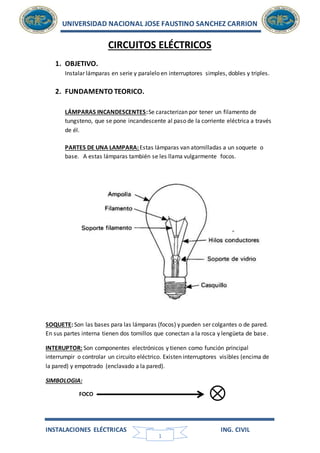
How to Find the Number of Incandescent Lamps in a Final Sub Circuit?
Understanding the Current Rating of a Final Sub Circuit
To determine the number of incandescent lamps in a final sub circuit, it is crucial to first understand the current rating of the circuit. This rating indicates the maximum current that the circuit can handle safely without overloading.
Calculation Method for Determining the Number of Lamps
Once the current rating is known, the calculation method involves dividing the total circuit current rating by the individual current rating of each incandescent lamp. This will provide the exact number of lamps that can be safely installed in the final sub circuit.

Factors to Consider
Voltage and Current Supply
When determining the number of incandescent lamps in a final sub circuit, it is essential to consider the voltage and current supply of the circuit. The voltage level will affect the total power consumed by each lamp and the overall load on the circuit.
Power Rating of Incandescent Lamps
Another factor to consider is the power rating of the incandescent lamps. Different lamps have different power ratings, and this will impact how many lamps can be safely connected in the final sub circuit. Ensuring that the total power consumption of the lamps does not exceed the circuit's capacity is crucial when determining the number of lamps to install.

Example Calculation
Case Scenario: 10A and 120V AC Supply
Consider a case where the final sub circuit has a current rating of 10A and operates on a 120V AC supply. These values are crucial in determining the number of incandescent lamps that can be connected safely.
Calculating the Maximum Number of Incandescent Lamps
To calculate the maximum number of incandescent lamps, we need to take into account the power rating of each lamp and the total power consumption. By dividing the total power capacity of the circuit by the power rating of each lamp, we can determine the maximum number of lamps that can be connected without exceeding the circuit's capacity.

Consideration of Resistive Load
Impact of Resistive Load on Incandescent Lamps
– Resistive loads, such as incandescent lamps, draw power from the circuit in a linear manner based on their resistance.- The more lamps connected to a circuit, the higher the total resistive load, which can affect the overall performance and safety of the circuit.- Excessive resistive load can lead to overheating of the circuit and potential failure of the lamps.
Unity Factor and Its Significance
– The unity factor is the ratio of actual power consumption to apparent power in the circuit.- For resistive loads like incandescent lamps, the unity factor is close to 1, indicating efficient power consumption.- Understanding the unity factor is crucial in optimizing the connection of incandescent lamps in a final sub-circuit.

Consideration of Resistive Load
Impact of Resistive Load on Incandescent Lamps
– Resistive loads, such as incandescent lamps, draw power from the circuit in a linear manner based on their resistance.- The more lamps connected to a circuit, the higher the total resistive load, which can affect the overall performance and safety of the circuit.- Excessive resistive load can lead to overheating of the circuit and potential failure of the lamps.
Unity Factor and Its Significance
– The unity factor is the ratio of actual power consumption to apparent power in the circuit.- For resistive loads like incandescent lamps, the unity factor is close to 1, indicating efficient power consumption.- Understanding the unity factor is crucial in optimizing the connection of incandescent lamps in a final sub-circuit.